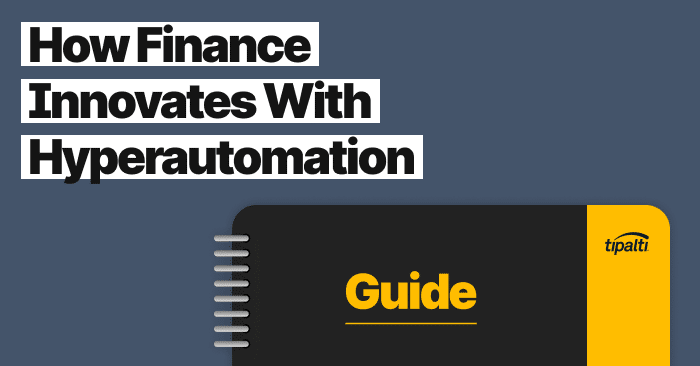
Ready to optimize your finance processes with hyperautomation? Let’s dive in.
One of the major tenets of lean accounting and lean management is that accounts payable must be eliminated. Have I got your attention yet?
It’s a provocative proposition. Can companies really do away with AP? Who’s going to pay suppliers? Who’s going to make sure invoices match receipts match POs?
First, let’s examine what lean accounting actually professes.
Lean accounting was born from lean manufacturing, originally developed by Toyota. Its goals are to eliminate waste in an organization, free up the capacity to take on new projects, speed up processing, eliminate errors, and make the process easier to understand. Lean accounting also looks to create customer value and a culture for continuous improvement.
In most organizations, AP is a cost center, a necessary evil. Suppliers must be paid. It’s a simple fact. How to determine what they’re paid is part of an elaborate process of purchase orders, invoices, and receipts. Traditional AP has almost consistently turned to human bodies to make sense of all this and to make the final payment step (send a check, send a wire, etc.). It’s a rare case if this process didn’t involve human friction.
How the Digital Economy Differs
At Tipalti, we see innovative ways in which much of this process is streamlined. For example, advertising networks and affiliate networks have to pay their publishers and affiliate marketers, but there’s no such thing as an invoice. So what determines the payment amount? These networks are built with performance tracking (how many ad impressions, how many clicks, how many sales, etc.) and those numbers determine what someone is paid.
Likewise, in the sharing economy and crowdsourcing companies, the tasks and services are tracked by the network company (hours worked, miles driven, projects completed, widgets shared). Other than completed work orders, there is rarely an invoice involved coming from the contractor or freelancer performing the service.
At that point, these companies essentially know who to pay and how much, they upload that information into Tipalti, and (based on the payee’s selected payment preferences) payment is sent via check, wire, direct deposit, PayPal, etc. The act is so seamless, that one wonders how it might possibly be leaner.
Lessons for Traditional Businesses
But how can traditional business models, that aren’t based on a digital economy, take on some of these practices to reduce their own waste?
One of our eCommerce customers Touch of Modern actually built a very fluid operation for dealing with supplier inventory and remittance. You can read the case study here, but at a high level, they looked at creating a workflow where automation, including AP automation, are part of daily operations. For example, rather than requiring suppliers to complete an order to purchase order, they may opt to automatically pay a portion of the invoice based on goods received. No phone calls or emails about missing stock. No further negotiation. “We pay you for what you deliver” regardless of what’s laid out in the original contract or invoice.
Brian Maskell, President of BMA, a lean accounting firm, has illustrated similar points. For example, one of their case studies revolves around the use of “auto-vouchers” as a way to avoid further steps in the AP process that delay payments you know will be made regardless. In this case, it cut the flow time nearly in half from 22 days to 12.2 days.
This philosophy enabled Touch of Modern to grow from a $9M company to a $100M company in just a few years and they never hired an accounting person. Add to this the fact that Touch of Modern focuses heavily on a positive supplier experience since they look to attract the cream of the crop and the most innovative, unique products. They do not make suppliers jump through unnecessary hoops to do business with them.
For certain, we will talk more about lean accounting as it relates to AP. As businesses look at their own internal finance operations and how they can be improved, streamlined, and automated, the potential benefits of greater productivity, service, and profitability are too clear to ignore.